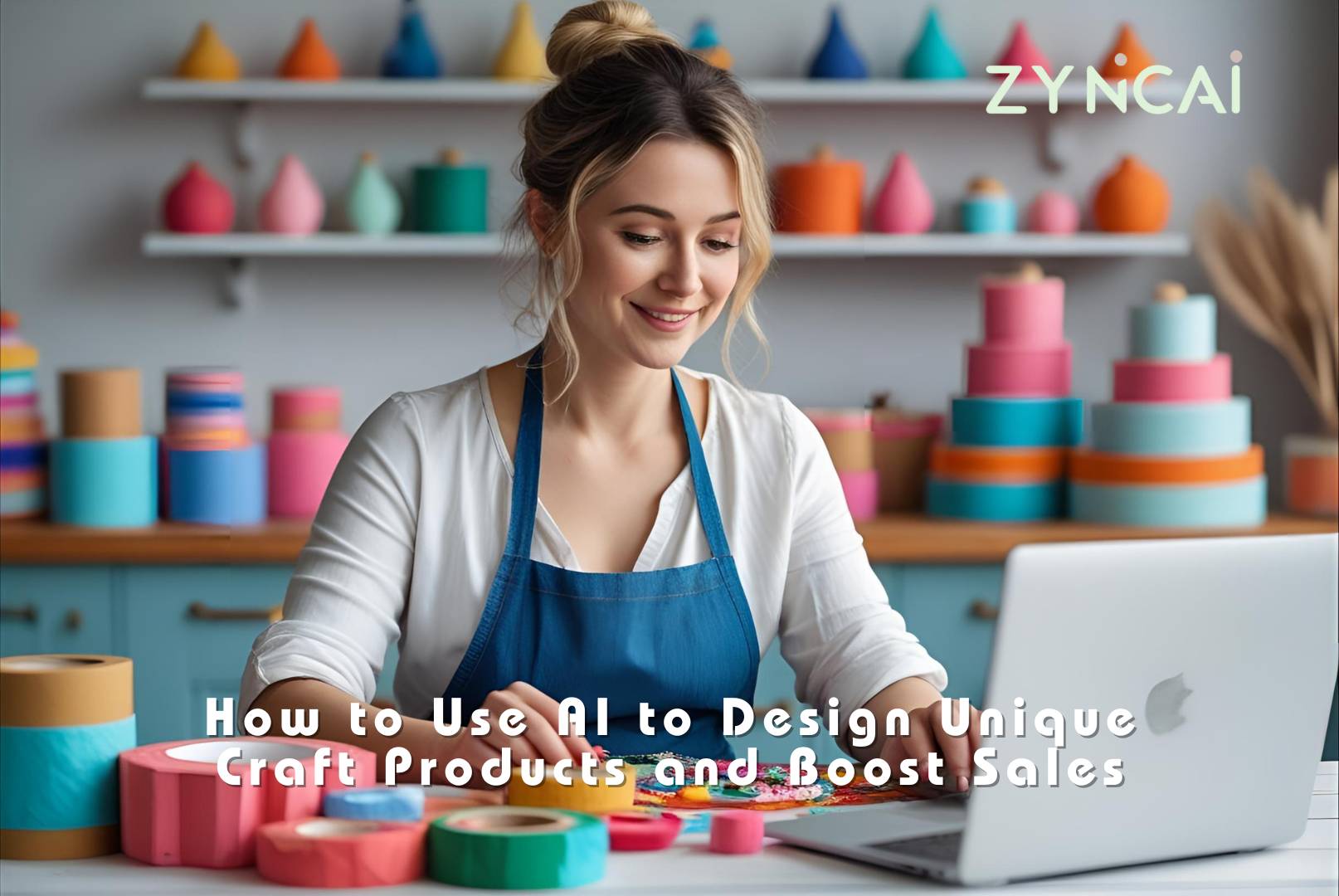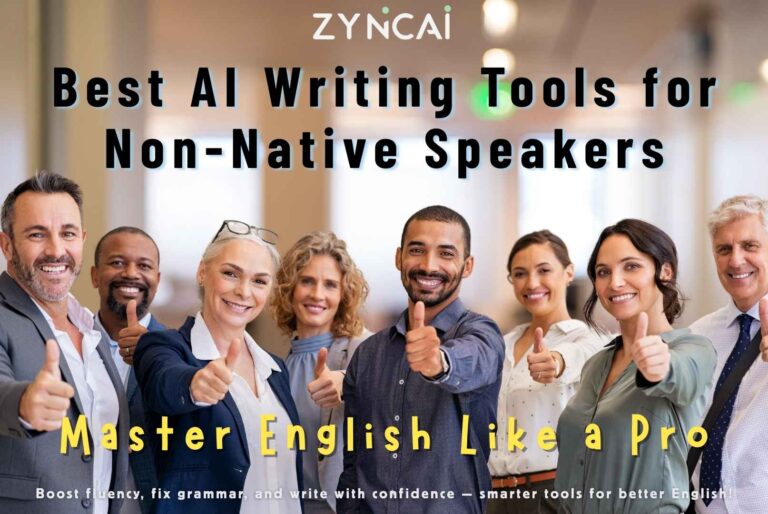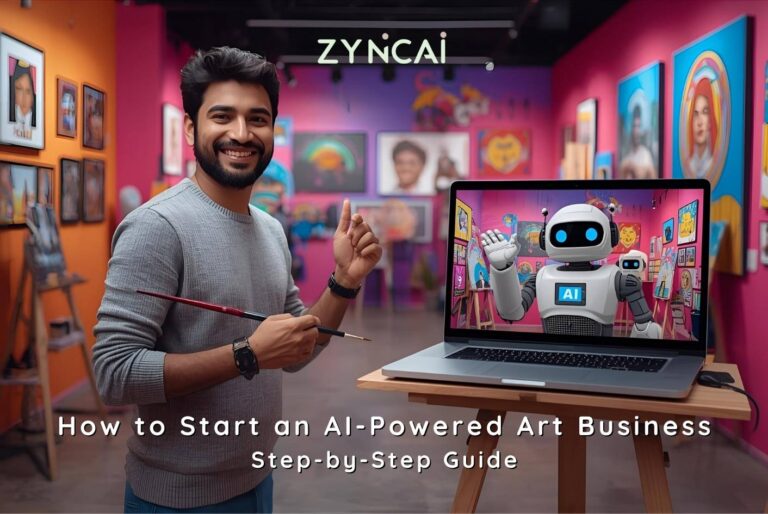How to Use AI to Design Unique Craft Products and Boost Sales
You love making things. Now imagine making things people can’t wait to buy.
Every great craft starts with an idea. But turning that idea into something customers can not resist? That is where many makers struggle. This is where AI steps in, your new creative partner that never runs out of inspiration.
Imagine designing a custom pattern in seconds. Trying ten color combinations before lunch. Or creating a product mock-up so real, your customers can picture it in their hands. AI makes all this possible without the extra cost, wasted time, or endless revisions.
The best part? These AI tools don’t just make you a better designer, they make you a smarter seller. You will create products that wow buyers, match trends, and keep your shop ahead of the competition. In this guide, you will learn exactly how to use AI to design unique craft products and turn creativity into sales.
Why AI is a Game-Changer for Craft Product Design
The craft world runs on creativity. Every piece is a reflection of passion and skill. But in today’s crowded market, even the best ideas can get lost. That is where AI changes the game.
- Speeds up the design process: Turn one idea into ten in minutes. No long waiting. No wasted effort.
- Enables personalization: Let customers feel the design is made just for them. Use data to match their style, colors, and tastes.
- Predicts trends: AI can scan thousands of products, spot patterns, and tell you what’s about to be hot.
- Expands creativity: Suggests shapes, textures, and color palettes you might never have thought of.
With AI, you don’t replace your craftsmanship, you supercharge it. It is like having a creative assistant who never sleeps, never runs out of ideas, and always brings something fresh to the table. The result? Designs that are original, beautiful, and ready to sell.
Understanding AI Tools for Craft Design
AI tools are reshaping how crafts come to life. They are not here to replace your skill, they are here to boost it. Imagine having a creative assistant that works 24/7, offering fresh ideas, predicting trends, and helping you experiment without risk.
These tools work by analyzing huge amounts of data and turning it into simple, useful outputs. They can generate detailed designs from simple sketches or even words. They can suggest colors, textures, and styles based on what’s trending or what your customers like.
Below is a closer look at what AI tools can do for craft designers,
- Visual Design: Quickly create product mockups, patterns, and illustrations from your ideas or prompts. No need for expensive software or long hours.
- Trend Analysis: Stay ahead by knowing what styles and colors are rising in popularity before everyone else. AI scans social media, marketplaces, and fashion sites to keep you informed.
- Personalization: Make customers feel special. AI can help customize designs based on preferences, past orders, or even local trends.
- Material Simulation: Preview how your design will look on different materials like wood, fabric, or metal. Save time and money by avoiding trial and error.
- Color & Style Inspiration: Break creative blocks with AI generated color palettes and style suggestions that push your boundaries.
Using AI tools means less guesswork and more confidence. You can test multiple design ideas quickly. You can spot what customers want before they even say it. And you can deliver unique, high-quality products that truly stand out.
The key is to remember is that AI is a tool, not a replacement. Your craftsmanship, your passion, and your unique touch remain the heart of every product. AI just gives you the wings to fly higher and faster in the craft world.
Step-by-Step: How to Use AI to Create Unique Craft Products
Step 1 – Define Your Niche and Target Audience
Know who you are designing for. Use AI tools like Google Trends, Exploding Topics, or social media analytics on platforms like Instagram and Pinterest.
For example, if you spot rising interest in eco-friendly home decor, you can tailor your products to that market. Narrowing your niche helps you connect with the right buyers.
Step 2 – Generate Design Concepts
Use AI image generators like DALL·E, Midjourney, or Stable Diffusion. Enter creative prompts to get instant designs.
For example,
“Minimalist wooden jewelry box with geometric patterns and natural finish.”
This creates fresh design ideas fast, giving you multiple options to explore without starting from scratch.
Step 3 – Refine and Customize Designs
Take your AI designs into tools like Photoshop, Canva AI, or Procreate. Adjust colors, add textures, or layer hand-drawn elements.
For example, you might brighten the colors on a floral pattern or add your logo to a digital fabric print. This ensures your product matches your unique brand style.
Step 4 – Prototype and Test
Create physical or digital samples. Use 3D printing, laser cutting, or mockup software like Placeit.
For example, 3D print a small batch of your jewelry box or create digital mockups showing your product in a real room setting. Testing helps you find and fix issues before full production.
Step 5 – Prepare for Market
Use AI photo editors like Designify, Fotor AI, or Remove.bg to polish product photos.
For example, remove cluttered backgrounds and enhance lighting on your wooden box photos. You can also create lifestyle images showing your product in use, helping buyers imagine owning it.
Bonus Tip – Use AI for Marketing and Sales
Boost your product launch with AI copywriting tools like Jasper or Copy.ai. For example, write compelling product descriptions that highlight your eco-friendly materials and unique design. Use AI to generate social media captions or email newsletters that engage your audience.
How AI Helps Boost Craft Product Sales
AI is more than just a design tool. It is a powerful sales booster. It helps craft professionals like you reach the right customers with the right products at the right time.
- Personalized Marketing
AI analyzes customer behavior and preferences. It tells you which designs will appeal to different groups. For example, it might suggest promoting bright, bold patterns to younger buyers, while recommending classic, muted tones to older customers. This means your marketing messages hit the mark every time. - Dynamic Pricing
Setting the perfect price can be tricky. Tools like Prisync or Price2Spy track competitors and market trends in real time. They help you adjust prices smartly, staying competitive without selling yourself short. This keeps your profits healthy and customers happy. - Demand Prediction
AI forecasts what products will be popular next season or holiday. It looks at sales data, search trends, and social media buzz. With this insight, you can plan production better, making enough of what will sell, and avoiding overstock on slow movers. - Better Product Descriptions
Words sell. AI writing tools like ChatGPT, Jasper, or Copy.ai craft clear, persuasive, and SEO-friendly product descriptions. They highlight your product’s benefits, tell your brand story, and use keywords that help your listings rank higher on Google and marketplaces. This drives more clicks and sales. - Targeted Advertising
AI platforms like Facebook Ads and Google Ads use smart algorithms to show your products to people who are most likely to buy. They optimize your ad spend by focusing on high-potential customers and adjusting campaigns in real-time. - Customer Insights
AI can analyze reviews and feedback to identify what customers love and what they want improved. Use this info to refine your products and service, building stronger loyalty and repeat sales.
Best AI Tools for Craft Designers
| AI Tool | Best For | Key Features | Free Plan Available |
| MidJourney | Artistic concept generation | Photorealistic & artistic images, high customization | ❌ |
| Canva AI | Easy design customization | Templates, AI text-to-image, background remover | ✅ |
| Fotor AI | Product mockups | Photo enhancement, realistic previews | ✅ |
| Designify | Automated product photography | Background removal, image clean-up | ✅ |
| Gemini / ChatGPT | Marketing & product descriptions | SEO copywriting, brainstorming | ✅ |
| Blender (with AI plugins) | 3D modeling | Realistic product visualization | ✅ |
| Adobe Firefly | Creative image generation | Text-to-image, seamless integration with Adobe suite | ✅ |
| Runway ML | Video & image editing with AI | Real-time video editing, green screen tools | ✅ |
| Looka | Logo and branding design | AI-powered logo generation, branding packages | ✅ |
| Deep Dream Generator | Artistic style transfer | AI-generated artistic effects | ✅ |
| Remove.bg | Background removal | One-click AI background removal | ✅ |
| Daz 3D | 3D character & product modeling | High-quality 3D model creation | ✅ |
| Crello (VistaCreate) | Graphic design templates | Easy drag-and-drop with AI-powered tools | ✅ |
| Artbreeder | AI image breeding & creativity | Combine and edit images using AI genetics | ✅ |
| Lensa AI | AI photo editing | Portrait enhancement, background editing | ✅ |
Tips to Make Your AI-Designed Crafts Stand Out
Using AI gives you a creative boost, but standing out takes more than just great designs. Following is how to make your crafts truly unforgettable,
- Blend AI Creativity with Handmade Details
AI can generate amazing ideas, but your personal touch adds soul. Combine AI designs with hand-painted accents, custom finishes, or unique textures. This mix of tech and craft creates authenticity that customers love. - Tell a Story in Your Product Descriptions
People buy stories, not just products. Share your creative journey, how AI inspired the design, the care you put into crafting each piece, or the meaning behind your patterns. Emotional connections turn browsers into loyal buyers. - Offer Limited Editions
Scarcity drives desire. Launch limited runs of AI-designed products with special features or numbering. When customers know a design is rare, it feels more valuable and exclusive boosting sales and brand prestige. - Stay on Trend with Regular Updates
Use AI market insights and trend analysis tools to keep your designs fresh. Regularly update your product line to match shifting customer tastes and seasonal demands. This keeps your shop relevant and exciting. - Create Cohesive Collections
Group your AI-designed products into themed collections. This encourages customers to buy more and helps your brand look polished and professional. Collections tell a bigger story and boost average order value. - Engage with Your Audience
Use AI-powered social listening tools to track what your customers say and want. Respond to feedback and involve your audience in design choices through polls or contests. This builds community and trust around your craft brand. - Leverage Quality Photography
Showcase your AI-designed crafts with high-quality images. Use AI photo editors to enhance lighting, remove distractions, and create lifestyle shots. Great visuals grab attention and make your products irresistible online. - Highlight Sustainability and Ethics
If your craft uses eco-friendly materials or ethical processes, shout it out. Many customers value sustainability, and AI can help you source greener materials or optimize production to reduce waste.
Common Mistakes to Avoid
Using AI in craft design is powerful. But it is easy to slip up. Avoid these common pitfalls to keep your business strong and authentic,
- Relying 100% on AI
AI is a great tool, but it’s not a magic wand. Don’t let it replace your creativity and craftsmanship. Always add your personal touch, whether it is hand-finishing details or customizing designs. This keeps your work unique and authentic. Customers can tell when something feels too “machine-made.” - Ignoring Copyright Rules
Not all AI-generated content is free to use commercially. Some tools have restrictions or use copyrighted material in their training data. Always read terms and conditions carefully. Use AI platforms that guarantee commercial licenses, or create original prompts to avoid legal trouble. - Skipping Customer Feedback
Don not rush to mass produce AI-designed products without testing. Show prototypes to customers, friends, or social media followers first. Collect feedback on design, quality, and appeal. This step helps you spot flaws, improve your product, and avoid costly mistakes. - Over-complicating Designs
AI can generate complex visuals, but overly busy designs may confuse customers or be hard to produce. Keep designs clean and wearable. Balance creativity with practicality to ensure your craft is both beautiful and functional. - Ignoring Market Trends
Even the best design won’t sell if it is out of style. Use AI tools to track trends regularly. Avoid making products based solely on your personal taste. Remember, you are creating for customers. - Neglecting Branding
AI-generated designs should fit your brand’s voice and story. Don’t scatter styles wildly. Maintain a consistent look and feel across your products. Strong branding builds customer trust and recognition. - Underestimating Production Costs
Some AI designs might look amazing but be expensive or difficult to make. Always calculate materials, time, and labor before committing. AI can help you prototype cheaply, use that advantage wisely.
Avoiding these mistakes will help you use AI confidently and creatively. Your craft business will stay authentic, legal, and customer-focused setting you up for long-term success.
Future Trends: AI and the Craft Industry
AI is only getting smarter. The future of craft design will be shaped by even more powerful tools and deeper integration of technology. Below is what to expect,
- Hyper-Personalization
AI will enable crafts tailored to individual customers like never before. Imagine designs that adapt in real time to preferences, occasions, or even moods. Customization will become the norm, not the exception. - Augmented Reality (AR) and Virtual Try-Ons
Customers will preview crafts in their homes using AR before buying. From wall art to handmade furniture, AI-powered AR apps will let buyers visualize how products fit their space and style, reducing returns and boosting confidence. - AI-Driven Sustainable Crafting
Sustainability will be front and center. AI will help crafters source eco-friendly materials, minimize waste, and optimize production processes to reduce environmental impact—all while keeping costs low. - Collaborative AI Tools
Expect more intuitive AI tools designed for seamless collaboration between humans and machines. These will make design faster and more interactive, letting you experiment and iterate with instant feedback. - Smart Marketplaces
Online craft marketplaces will use AI to offer smarter product recommendations, pricing strategies, and marketing automation, making it easier for artisans to reach the right buyers worldwide. - Voice and Text-Based Design Interfaces
Future AI tools will let you design using natural language: just describe your idea, and the AI brings it to life. No complex software skills required. - Integration with 3D Printing and Robotics
AI will connect directly to 3D printers and robotic arms, turning digital designs into physical products faster and with more precision. This will open new horizons for complex and customized crafts.
FAQs: Using AI for Craft Product Design and Sales
- Can AI really design craft products?
Yes. AI generates ideas, patterns, and prototypes, but you bring the final craft to life. - Is AI good for beginners in craft making?
Absolutely. AI helps beginners create polished designs without guesswork or costly mistakes. - How much do AI design tools cost?
Many tools have free plans. Premium versions usually cost between $10 and $50 per month. - Can I sell AI-generated designs legally?
Yes, but always check the AI platform’s commercial use license before selling. - Will AI replace handmade craftsmanship?
No. AI supports your creativity. It does not replace the human touch that customers love. - Do I need technical skills to use AI design tools?
Not at all. Most AI tools are user-friendly and require no coding or design experience. - How fast can AI generate design ideas?
In seconds to minutes, depending on the tool and complexity of your prompt. - Can AI help me predict what products will sell?
Yes. AI analyzes trends and customer data to forecast popular designs. - Are AI-generated designs original?
AI creates unique combinations, but it is good to customize and refine to keep originality strong. - Can I customize AI-generated designs?
Definitely. You can tweak colors, shapes, and details to match your style. - What types of crafts can AI assist with?
Almost any craft like textiles, ceramics, jewelry, woodworking, digital prints, and more. - Does AI help with marketing my crafts?
Yes. AI tools write product descriptions, create social media posts, and optimize listings for SEO. - Can AI tools suggest pricing strategies?
Some do. Tools like Prisync help you set competitive prices based on market data. - Is AI useful for creating product photos?
AI can enhance photos and remove backgrounds but doesn’t replace real product photography. - How do I ensure AI designs fit my brand?
Add your personal touch during editing and maintain consistent style across your products. - Can AI help me personalize products for customers?
Yes. AI can generate designs tailored to individual preferences or past purchases. - Are AI tools suitable for large-scale production?
AI is great for design and prototyping, but production still needs careful planning and quality control. - How do I avoid copyright issues with AI?
Use reputable AI platforms with clear commercial licenses and create original prompts. - Can AI help reduce production costs?
Yes. AI speeds up design and testing, helping you avoid costly mistakes early on. - Where can I learn more about AI tools for crafting?
Many websites, online courses, and blogs offer tutorials and tool reviews to get started.





